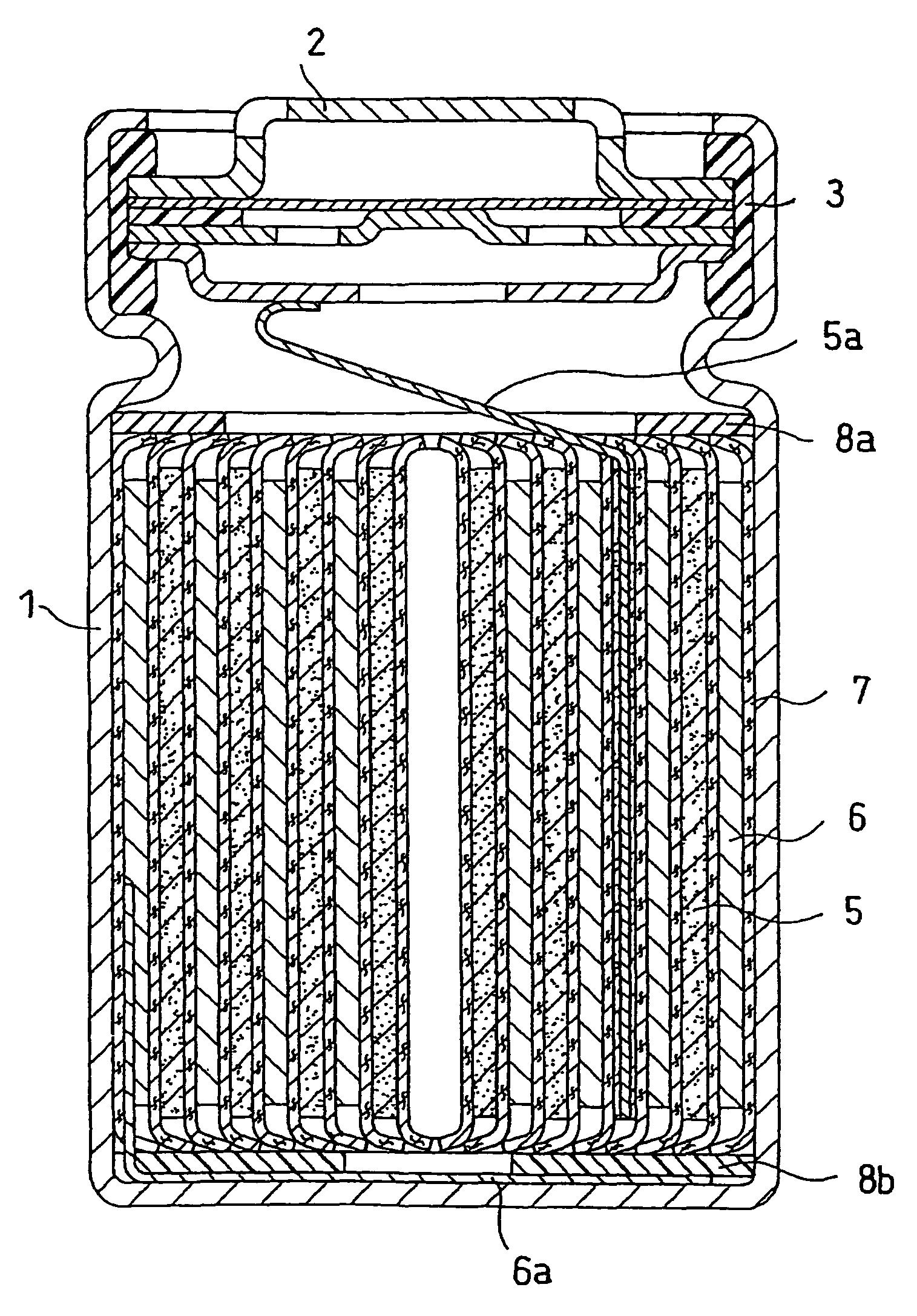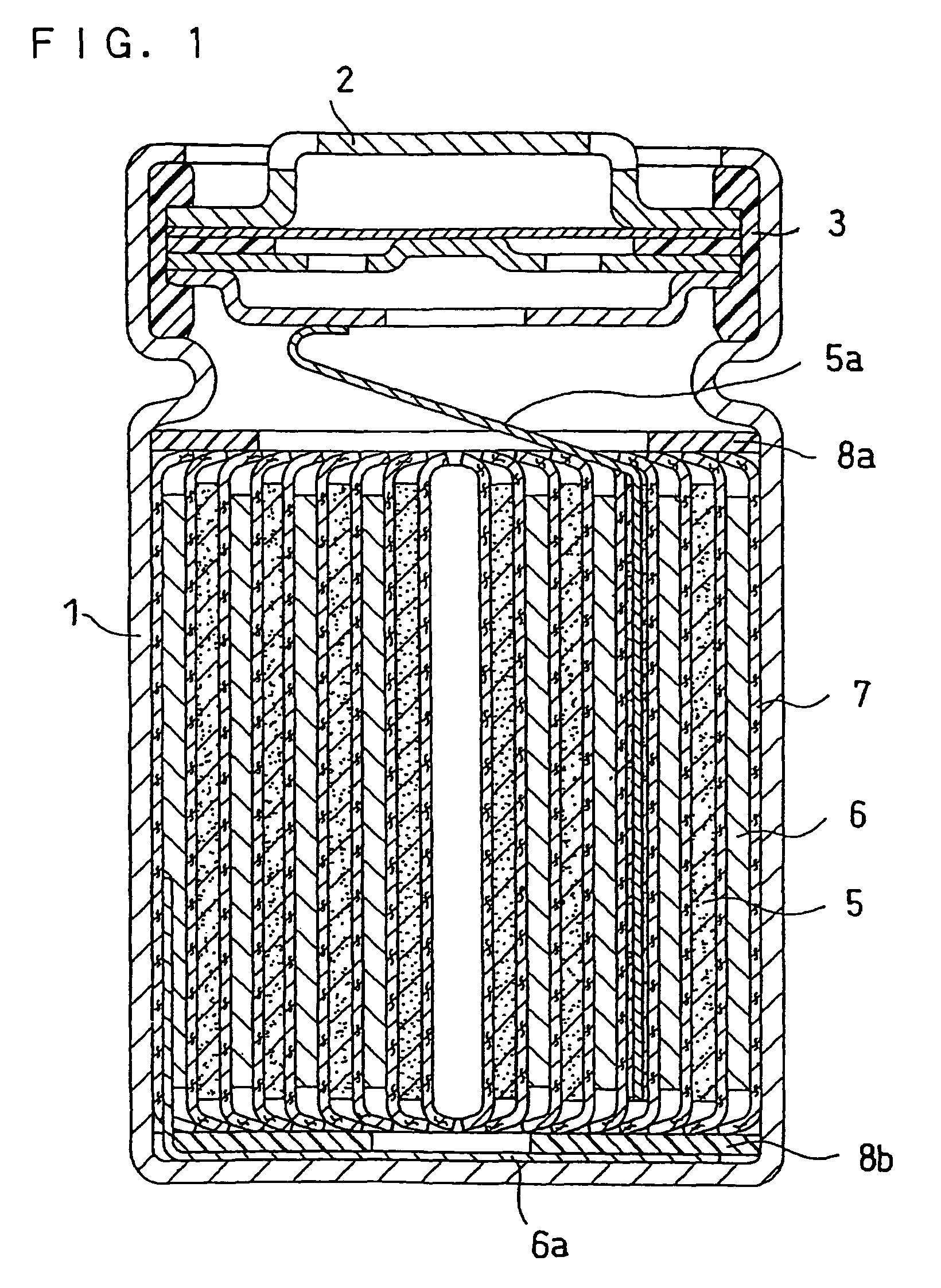Lithium ion secondary battery and method for producing the same
a secondary battery and lithium ion technology, applied in the field of lithium ion secondary batteries, can solve the problems of short circuit, expansion of short circuit, shrinkage of microporous sheets, etc., and achieve the effects of reducing the swelling of porous films, and improving resistance to electroly
- Summary
- Abstract
- Description
- Claims
- Application Information
AI Technical Summary
Benefits of technology
Problems solved by technology
Method used
Image
Examples
example 1
(a) Preparation of Positive Electrode
[0078]A positive electrode mixture slurry was prepared by stirring 3 kg of lithium cobaltate, 1 kg of PVdF “#1320 (trade name)” available from Kureha Corporation (N-methyl-2-pyrrolidone (NMP) solution containing 12% by weight of PVdF) serving as a positive electrode binder, 90 g of acetylene black, and a suitable amount of NMP with a double-arm kneader. This slurry was applied onto both sides of a 15-μm-thick aluminum foil serving as a positive electrode substrate, dried and roll pressed, to form positive electrode material mixture layers with a density of 3.3 g / cm3. The thickness of the electrode plate comprising the aluminum foil and the positive electrode material mixture layers was adjusted to 160 μm. Thereafter, the electrode plate was slit to a width such that it was capable of being inserted into a battery can for a cylindrical battery (No. 18650), to obtain a positive electrode hoop.
(b) Preparation of Negative Electrode
[0079]A negative el...
example 2
[0086]The same porous film as that of Example 1 was formed on the surfaces of the positive electrode material mixture layers instead of forming the porous film on the surfaces of the negative electrode material mixture layers. Except for this, in the same manner as in Example 1, a cylindrical lithium ion secondary battery was completed.
example 3
[0096]Porous film pastes were prepared by using single-liquid-type thermo-cross-linkable acrylonitrile copolymers with activation temperatures of cross-linkable site as shown in Table 2 as the film binders, instead of the single-liquid-type thermo-cross-linkable acrylonitrile copolymer with an activation temperature of cross-linkable site of 170° C. or higher. Cylindrical lithium ion secondary batteries were completed in the same manner as in Example 1 except for the use of these porous film pastes.
[0097]The activation temperature of cross-linkable site was changed, for example, by changing at least one of the molecular structure of the masking agent that masks the cross-linkable site, the molecular size thereof, the molecular weight of the copolymer, the composition ratio of the monomers, and the like.
[0098]With respect to each of the single-liquid-type thermo-cross-linkable acrylonitrile copolymers, the viscosity change rate, the flexibility of the porous film, the short-circuit d...
PUM
| Property | Measurement | Unit |
|---|---|---|
| temperature | aaaaa | aaaaa |
| temperatures | aaaaa | aaaaa |
| thickness | aaaaa | aaaaa |
Abstract
Description
Claims
Application Information
 Login to View More
Login to View More - R&D
- Intellectual Property
- Life Sciences
- Materials
- Tech Scout
- Unparalleled Data Quality
- Higher Quality Content
- 60% Fewer Hallucinations
Browse by: Latest US Patents, China's latest patents, Technical Efficacy Thesaurus, Application Domain, Technology Topic, Popular Technical Reports.
© 2025 PatSnap. All rights reserved.Legal|Privacy policy|Modern Slavery Act Transparency Statement|Sitemap|About US| Contact US: help@patsnap.com


